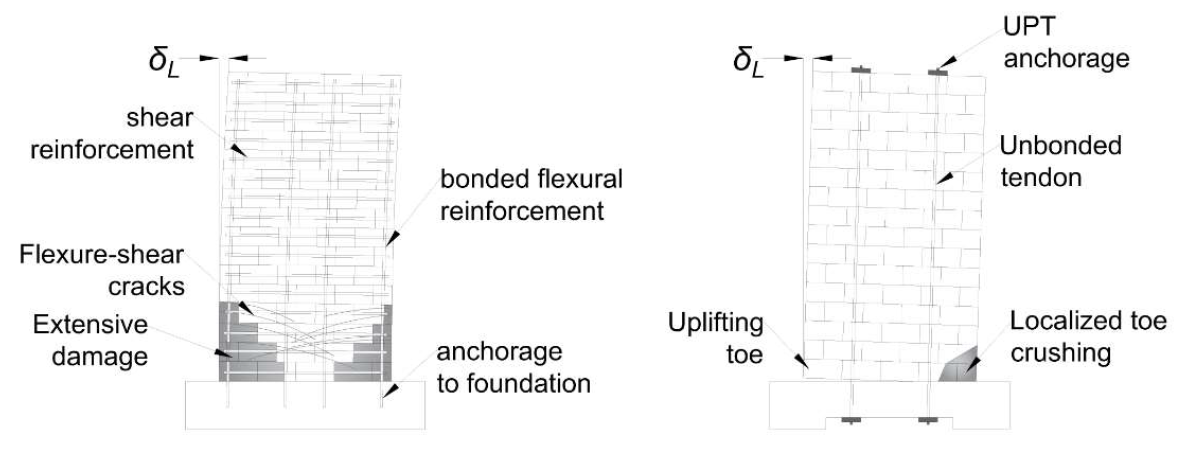Dimitrios Kalliontzis, Arturo E. Schultz and Sri Sritharan
Dimitrios Kalliontzis, Assistant Professor, Department of Civil and Environmental Engineering, University of Houston, Houston, TX, United States, dkallion@central.uh.edu
Arturo E. Schultz, Department Chair and McDermott Professor, Department of Civil and Environmental Engineering, The University of Texas at San Antonio, San Antonio, TX, United States, arturo.schultz@utsa.edu
Sri Sritharan, Interim Associate Dean & Wilkinson Chair Professor, Department of Civil, Construction and Environmental Engineering, Iowa State University, Ames, IA, United States, sri@iastate.edu
ABSTRACT
The self-centering capability of structural masonry walls can be enhanced with the use of vertical unbonded post-tensioning combined with a rocking mechanism at the wall-foundation interface. However, the lateral displacement capacity of these wall systems is often compromised by early crushing of the compression toes. An experimental research study successfully investigated a new concept to prevent toe crushing by introducing thin rubber pads underneath the bottom corners of a full-scale one-story masonry wall. The wall was subjected to free vibration and quasi-static tests, showing excellent lateral displacement capacity and no observable damage to the masonry. To enable the application of rocking masonry walls with rubber pads and unbonded post-tensioning, this paper presents a design procedure by incorporating different damping components in the response of this wall system, which includes inherent viscous damping, hysteretic action, and energy dissipation due to the wall impacting on the foundation base.
KEYWORDS: rocking, structural masonry wall, self-centering, rubber pads, seismic



